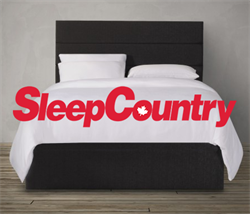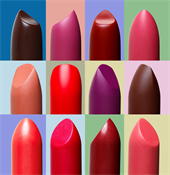Week 6.1 Market Segmentation
In this lesson, we are interested in market segmentation. Let us start with the definition of market segmentation.
Market segmentation is the process of aggregating prospective buyers into groups that have a common need and will respond similarly to a marketing action.
The main reason behind market segmentation is to identify and satisfy the needs of the customers to the best of our ability. People are different, and they have different needs and wants. When we segment the market, we group the people with similar needs into one segment which allows us to cater to their specific needs with the most tailored products/services.
Market segments are relatively homogeneous groups of prospective buyers that result from the market segmentation process.
Each market segment contains people who are relatively similar to each other in terms of their needs and consumption behaviour. In order to satisfy the segments’ specific needs, businesses started to create differentiated products.
Product differentiation involves a firm using different marketing mix activities, such as product features and advertising, to help consumers perceive the product as being different from and better than competing products.
In market segmentation, we link the needs of segments to marketing actions as shown in the figure below. The actions we take are done by mixing 4Ps (marketing mix elements). Remember that marketing mix elements are under the control of the organization.
Market Segmentation. Market segmentation consists of 3 steps: 1) identify market needs, 2) link needs to actions, and 3) execute marketing program actions.
©University of Waterloo
In summary, market segmentation groups people in a market segment according to the similarity of their needs and wants. The organization takes marketing actions to satisfy the needs of each segment by creating slightly differentiated products/services. The marketing actions may involve different aspects of the marketing mix, such as price, product’s features, advertising (promotion), or distribution (place) strategies.
The use of a market-product grid is necessary in segmentation. A market-product grid is a chart in which the consumer segments are represented in rows whereas differentiated products are presented in the columns. In each cell, the estimated market size of the segments is shown.

Retrieved from https://www.sleepcountry.ca
/mattresses/by-base/storage
Example: The table at right is a market-product grid for Sleep Country. Market segments are in rows and slightly differentiated products are in columns. The potential market size of each segment is represented by a number from zero to three. Zero represents no potential; one represents small potential; two represents medium potential; and three represents the most potential.
| | Twin | Double | Queen | King |
|---|
| Couples with no children |
0 |
0 |
2 |
2 |
|---|
| Couples with young children |
3 |
1 |
2 |
2 |
|---|
| Couples with teenage children |
0 |
3 |
2 |
2 |
|---|
| Singles with no children |
0 |
3 |
1 |
0 |
|---|
Stop and Think Question: When should we segment markets?
Click to reveal answer.

Saqib Ahmed/iStock/Getty Images
Segmentation is a good idea if it will increase sales, profit, and return on investment. If the increase in profit is less than the cost of segmentation, there is no need to segment.
Market segmentation can be illustrated with three specific situations:
- one product and multiple market segments,
- multiple products and multiple market segments, or
- "segments of one," or mass customization.
1. One Product and Multiple Market Segments
In this case, the company does not apply product differentiation, but rather attempts to sell the same product to multiple market segments. The benefit of this strategy is that it helps the company avoid the costs of developing and producing additional versions of the same product. Product differentiation could entail high costs such as the costs of research and development, engineering, and manufacturing processes. However, this does not mean that there is no associated cost with taking one product to multiple segments. There are costs from separate promotional campaigns or a new channel of distribution which could add up to high amounts. However, these expenses are usually not as large as those for developing differentiated products.

Retrieved from http://www.impawards.com/2013/frozen_ver2.html; http://www.impawards.com/2013/frozen_ver6.html;
http://www.impawards.com/2013/frozen_ver7.html; http://www.impawards.com/2013/frozen_ver20.html
Examples: Movies, magazines, and books are single products frequently directed to two or more distinct market segments. Movie companies successfully promote their single production to multiple consumer segments by running different TV commercials or magazine ads. They simply feature different aspects of the movie that are targeted to different market segments, such as different countries.
2. Multiple Products and Multiple Market Segments
This is a typical strategy when a company produces differentiated products each of which is targeted towards a different consumer segment.

Retrieved from https://www.ford.ca
Example: Ford produces different lines of cars, SUVs, and pickup trucks each of which is targeted at a different type of customer. Producing these differentiated lines of vehicles is more expensive than producing only a single vehicle. However, it is an effective strategy that increases the profits by allowing the company to specifically address the needs of different consumer segments. For example, people with large families would require a van and would not be satisfied with a compact car.
3. "Segments of One" or Mass Customization
Consumers are treated as individual segments which is the reason behind the name “segments of one”. Companies customize the products to the consumers’ specific needs. Customization can be mass customization or ultra-customization.
In mass customization, companies tailor goods/services to the tastes of individual customers on a high-volume scale.

Retrieved from https://www.
mymms.com
Example: Mars Inc. personalizes your M&Ms. The company gives the customers options to pick from, which is the idea of mass customization. You can add your photo or a personal message.
Ultra-customization allows you to design the product/service based on your own ideas rather than picking from a set of options provided for you.

PLAINVIEW/iStock/ Getty Images
Examples: Designing your own clothes, from fabric choice to the shape.
Customize your website based on the design elements you want to include.
A Paris-based boutique applies ultra-customization by using your DNA to customize your lipstick. No other individual on the planet would have the same lipstick as you!
Segmentation is successful when the organization finds the balance between satisfying a customer's individual wants and achieving organizational synergy. The goal is to increase customer value through performing organizational functions such as marketing or manufacturing more efficiently. Companies can increased customer value in many ways including producing a variety of products/services, improving quality on existing products, lowering prices, providing easier access to products through improved distribution, and so on.
Cannibalization
As companies increase product differentiation by adding new products, it helps them to increase customer value. However, it could lead to a critical issue known as cannibalization.
Cannibalization happens when the new products/services simply steal customers and sales from the older, existing ones. Cannibalization is not desirable. Companies spend resources in segmentation as this is a costly process. When they finish the process they might face the loss of sales from their existing lines which is not helping to increase their overall profits given the cost of segmentation.

Retrieved from https://www.loft.com
/new-arrivals/catl00009?pcid=catl00002
Example: The Ann Taylor flagship store ended up competing with its LOFT outlets. The flagship Ann Taylor chain targets "successful, relatively affluent, fashion-conscious women" while the Ann Taylor LOFT chain targets "value-conscious women who want a casual lifestyle at work and home." In this case, LOFT stores ended up stealing sales from the Ann Taylor chain as many women who used to shop at the flagship store switched to LOFT outlets. They found better prices with the styles they liked.